11 Wild Animals in Dominica [Wildlife in Dominica]
Want to know more about the wildlife in Dominica?
Discover 11 wild animals in Dominica in this post, as well as interesting facts about them. 🇩🇲
Learn All About Dominican Animals
Ready to learn all about Dominican animals?
I’ve always been fascinated by animals, and by how they can be so different from one country to another. In this guide, we’ll focus on the many animals Dominica has on the land, in the sky, and underwater.
I’ve split the guide into 6 categories:
- Native animals from Dominica
- Endangered animals of Dominica
- What is Dominica national animal?
- How many animals native to Dominica?
- Are there snakes in Dominica?
- Are there crocodiles in Dominica?
Let’s dive in right away with our first category!
Native Animals from Dominica
Dominica, not to be confused with the Dominican Republic, is a small American island country located in the central part of the continent, in the Caribbean Sea. It is one of the smallest countries in all of America, and it used to be a British colony. It is part of the Windward Islands chain in the Lesser Antilles archipelago, and its capital and largest city is Roseau, which counts more than 14,000 inhabitants.
An interesting part of the country that I wanted to tackle is its wildlife. In light of that, I have listed the best of it, and I hope you will love learning what animals live in Dominica.
Here’s the Dominica animals list.
1. Red-rumped agouti
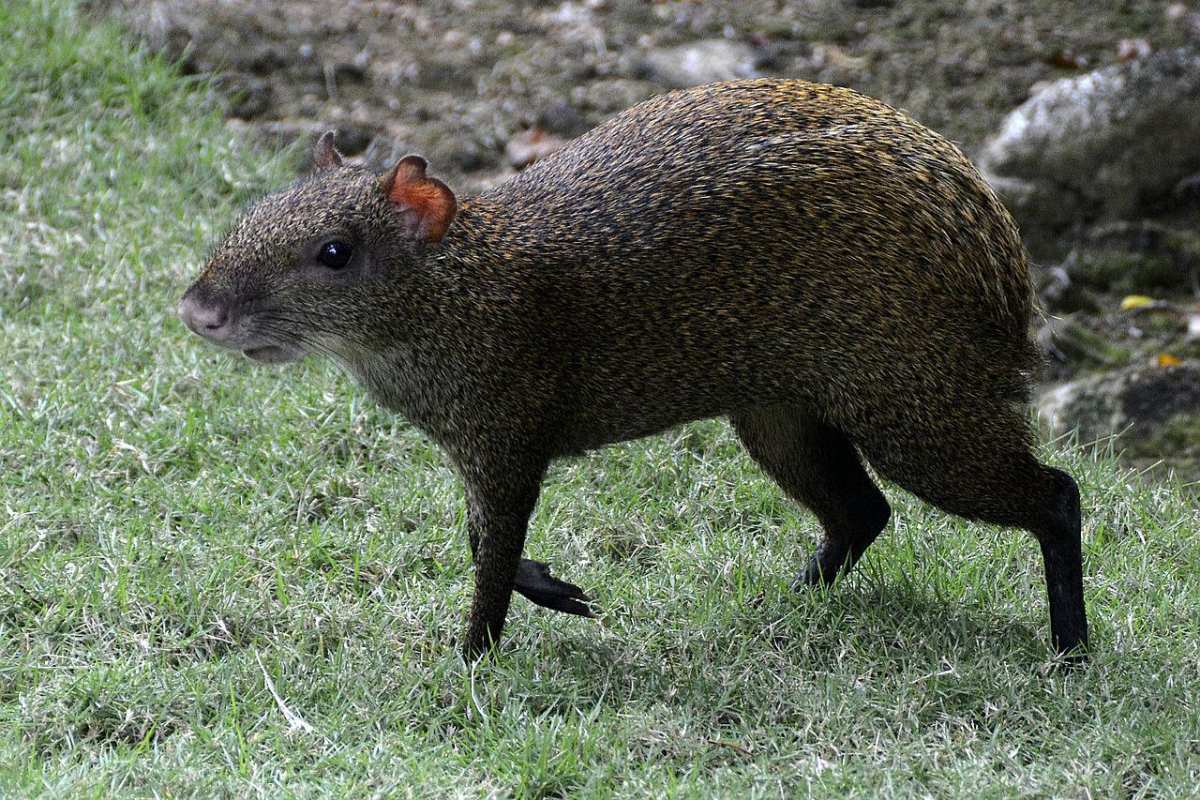
- Name: Red-rumped agouti
- Scientific name: Dasyprocta leporina
- Conservation status:
Believe it or not, there are not that many land mammals in Dominica. The red-rumped agouti is one of the most unique ones you will find on the island.
It is a Central and South American species of agouti that is overall brownish with darker spots. It is active by day and lives either a solitary life or in pairs, and its diet is made of fruits and nuts. Sometimes, it will burrow along river banks or under the roots of trees.
2. Manicou
- Name: Manicou
- Scientific name: Didelphis marsupialis
- Conservation status:
The manicou, more widely known as the common opossum, the possum, or the black-eared opossum, is a species of marsupial native to Central and South America. While it usually prefers living in the woods, it can also occasionally be seen in cities and fields.
The opossum is about the same size as a domestic cat, and it has large, black ears. It is one of the largest members of its family and is both terrestrial and nocturnal.
3. Common boa
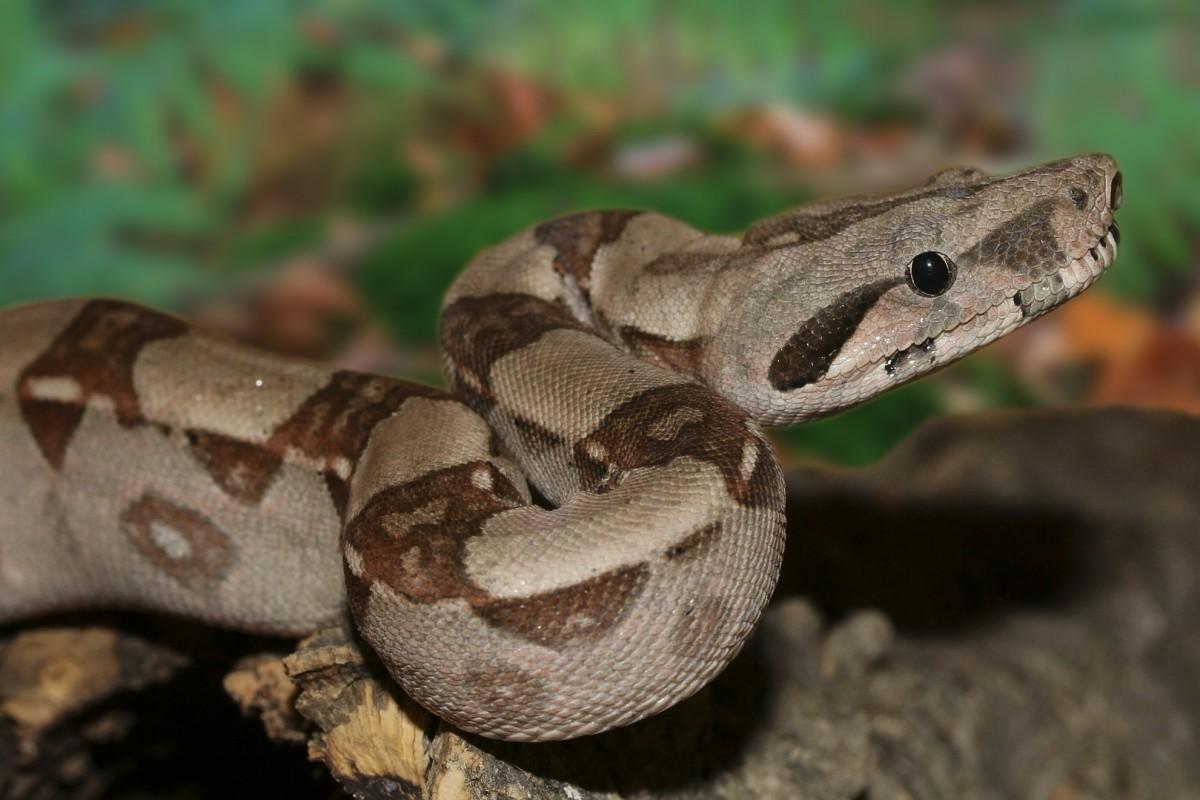
- Name: Common boa
- Scientific name: Boa constrictor
- Conservation status:
The common boa, largely known as the boa constrictor, its scientific name, is a species of non-venomous snake native to Central and South America. It is commonly kept as a pet and bred in captivity.
It is a solitary snake that does not interact with any other snake unless it wants to mate. Its diet is mostly made of small mammals and birds. It can hunt small lizards but also large prey such as wild pigs, monkeys, and even ocelots!
4. Mountain chicken
- Name: Mountain chicken
- Scientific name: Leptodactylus fallax
- Conservation status:
The mountain chicken is… absolutely not a chicken! Instead, it is one of the most famous -and loud- species of frog native to the Caribbean Islands of Montserrat and Dominica. Because it is critically endangered, it is currently being extensively studied to hopefully save it through a breeding program. Its biggest threats are diseases, hunting, and agricultural expansion.
In Dominica, it is known as the “crapaud”, which is the French word for toad!
5. Sperm whale
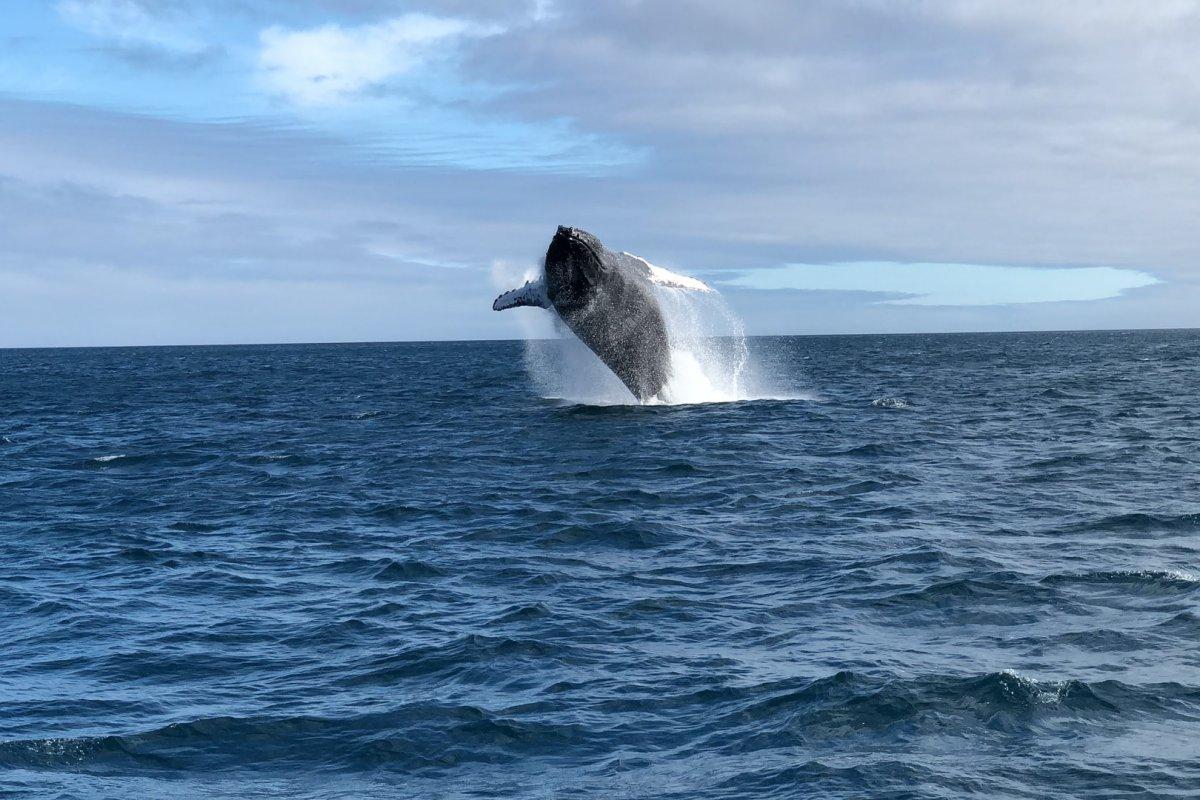
- Name: Sperm whale
- Scientific name: Physeter macrocephalus
- Conservation status:
Because Dominica is an island in a tropical sea, the most interesting part of its wildlife is actually beneath sea level!
The sperm whale is one of the most impressive animals you could see in Dominica, as it is the largest toothed predator on the planet. It has a worldwide range but tends to prefer coastal habitats in tropical and subtropical waters. It is also the third deepest diving mammal, reaching 2,250 m / 7,382 ft deep; truly a fantastic beast!
6. American oystercatcher
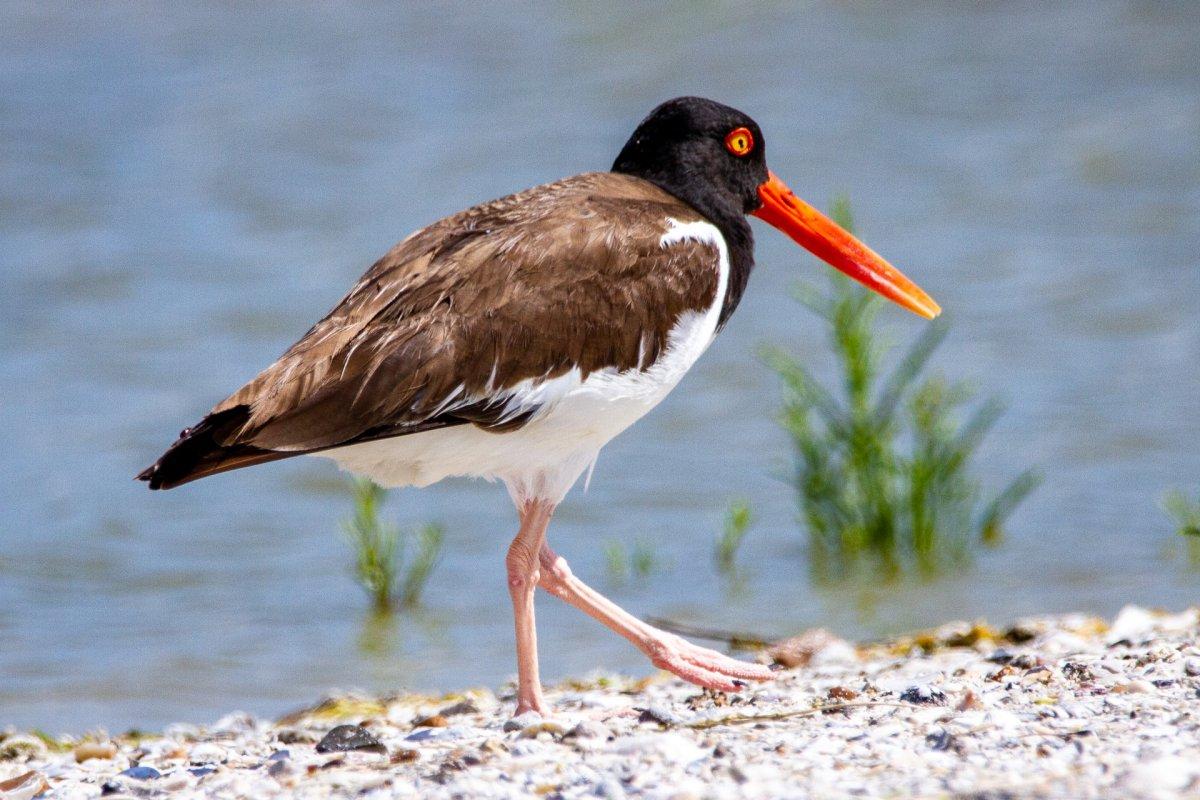
- Name: American oystercatcher
- Scientific name: Haematopus palliatus
- Conservation status:
The American oystercatcher is a species of bird native to the coastal waters of the Americas. Previously known as the sea pie, it has a long and thick orange beak it uses to feed on oysters. There are about 43,000 wild individuals that nest on beaches on coastal islands; their beak is perfect to open mollusks such as oysters. They also feed on other mollusks though, such as limpets, clams, and mussels.
7. West Indian manatee
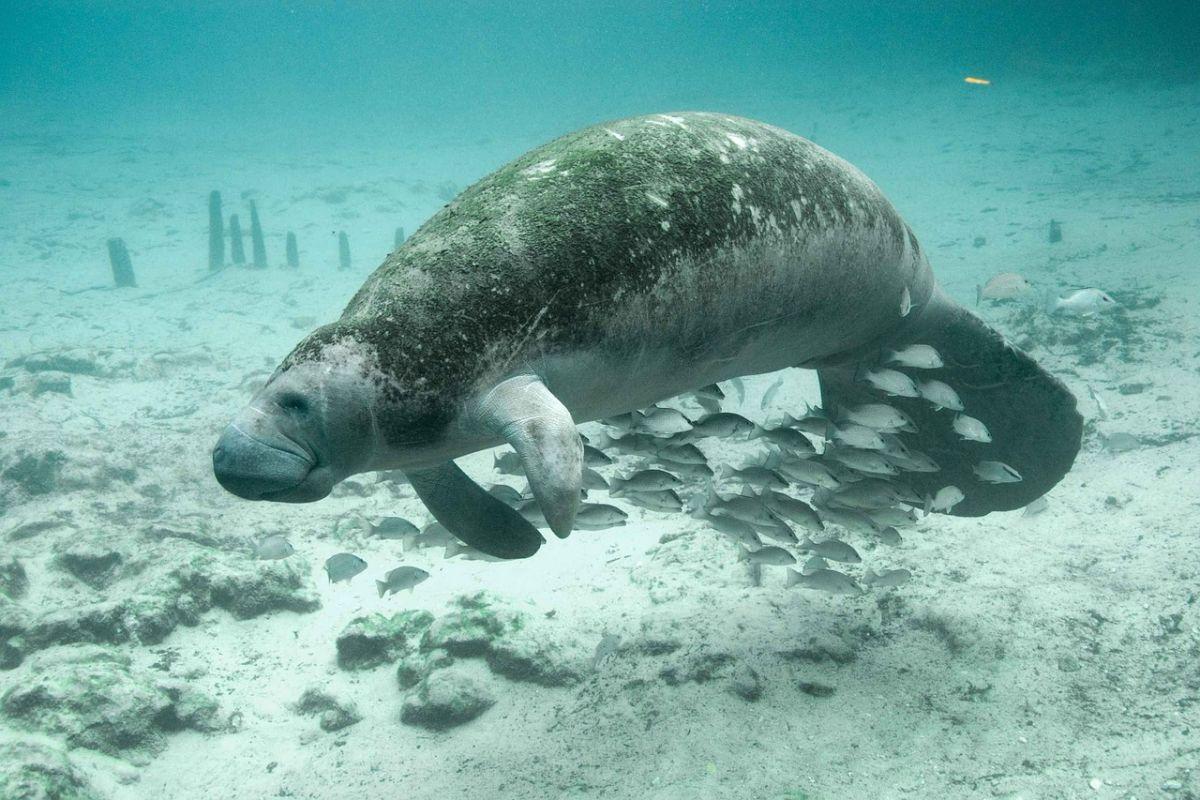
- Name: West Indian manatee
- Scientific name: Trichechus manatus
- Conservation status:
The West Indian manatee, also known as the Caribbean manatee or the Antillean manatee, is a species of sirenia native to Central and South America’s coastlines.
It is a herbivore that feeds on seagrass and uses its very sensitive vibrissae to feed and navigate in murky waters. This species was severely threatened in the 1970s, but is now slowly recovering, and was reclassified in 2017. However, it is still threatened by hunting and habitat fragmentation.
8. Greater bulldog bat
- Name: Greater bulldog bat
- Scientific name: Noctilio leporinus
- Conservation status:
The greater bulldog bat, also known as the fisherman bat, is a species of fishing bat native to most of Latin America. It uses echolocation to find its prey beneath water ripples, and then scoops the fish up, catches it, and clings onto it.
This bat can be found in tropical lowlands, usually over ponds, coastal lagoons, or estuaries. It lives in colonies of hundreds and hides in hollow trees during the day.
9. Common dolphin
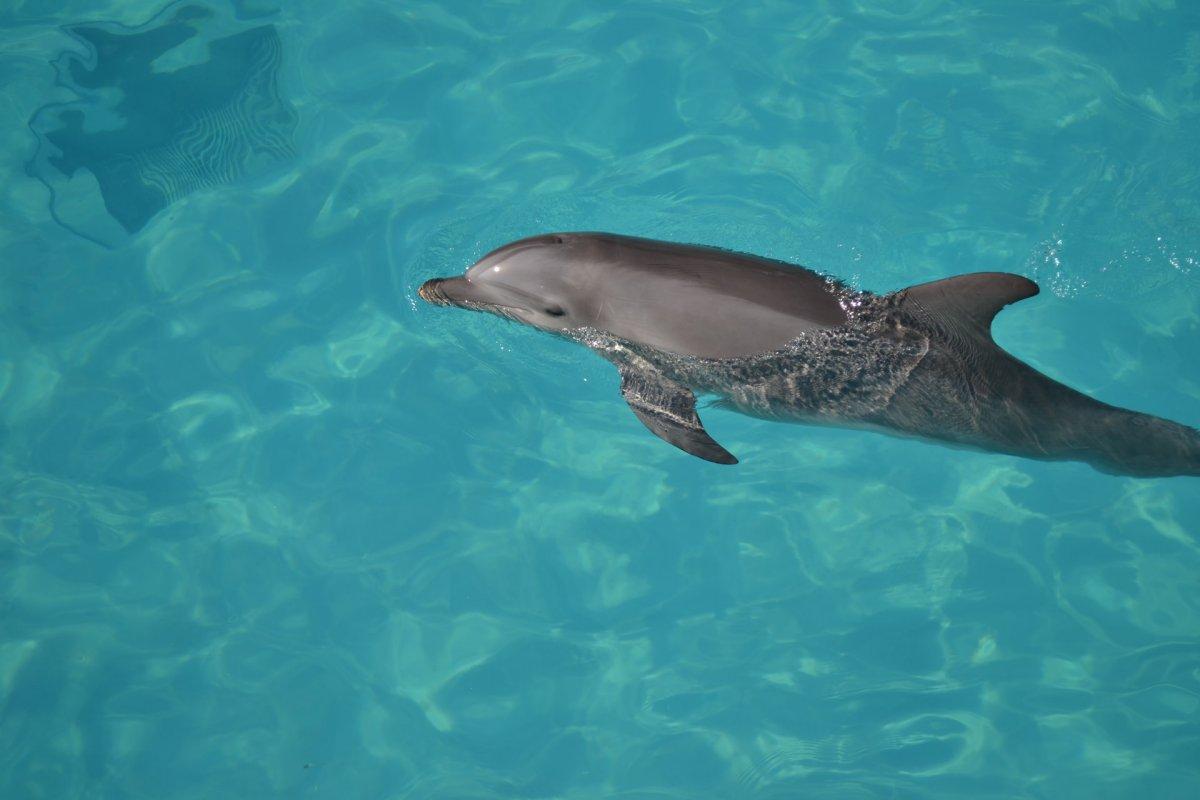
- Name: Common dolphin
- Scientific name: Delphinus delphis
- Conservation status:
The common dolphin is the most common species of cetacean on the planet, with an estimated population of about 6 million. It lives in temperate, subtropical, and tropical waters, and was depicted in Ancient Greek and Roman art!
An interesting behavior of common dolphins is mass stranding: this phenomenon, that can be observed with other cetaceans as well, is largely known as beaching: whales and dolphins strand themselves on land, where they will most likely die, due to echolocation issues, geomagnetic disturbances and changes in water temperatures.
10. Caribbean monk seal
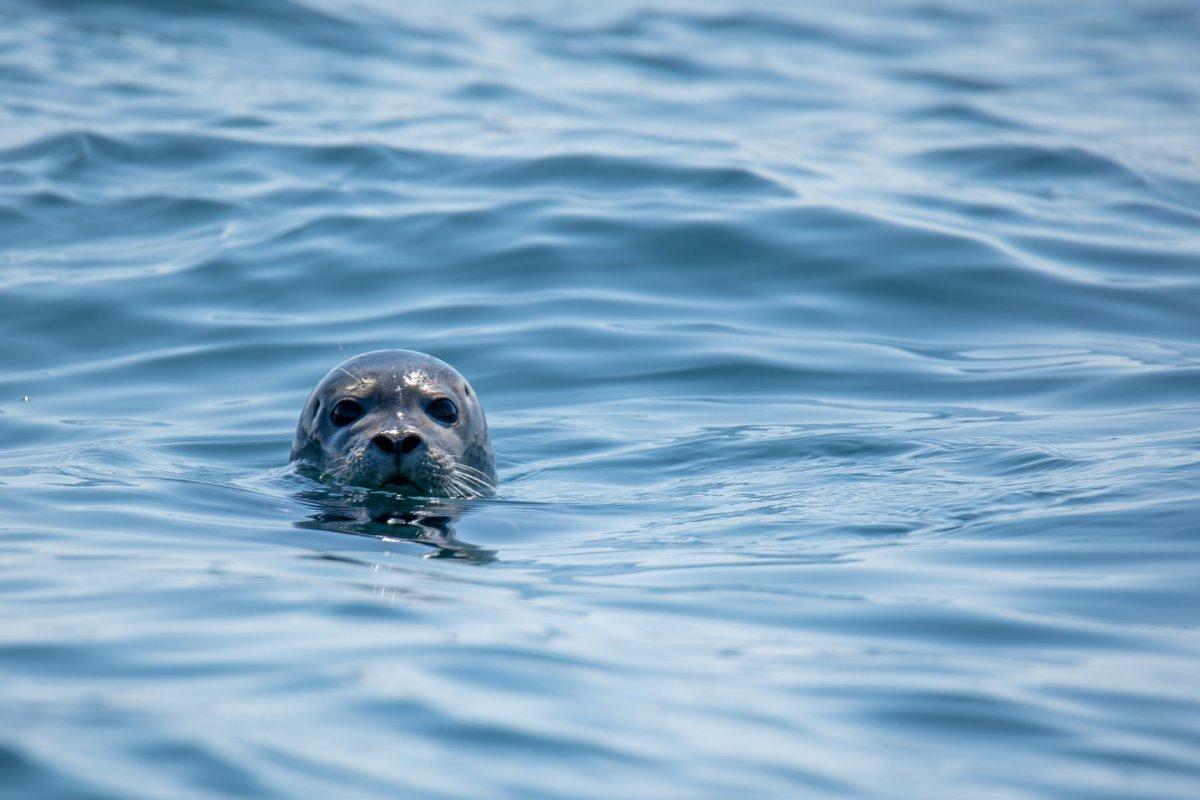
- Name: Caribbean monk seal
- Scientific name: Neomonachus tropicalis
- Conservation status:
The only animal in Dominica known to be extinct worldwide is the Caribbean monk seal. It was also known as the sea wolf or the West Indian seal and had sharks and humans as its main predators.
The reasons for the extinction of this species are overhunting them for their oil and overfishing their food resources. After an extensive 5-year search, the United States declared this species extinct in 2008.
11. Cedar waxwing
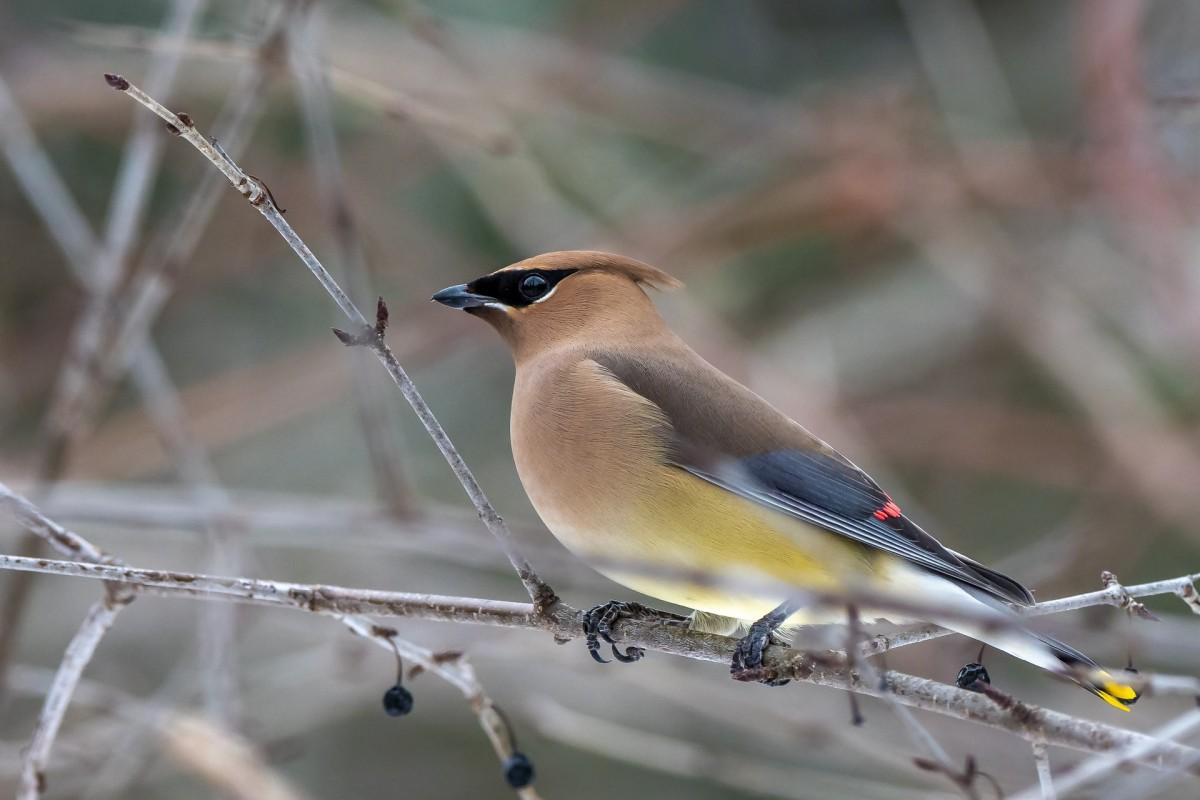
- Name: Cedar waxwing
- Scientific name: Bombycilla cedrorum
- Conservation status:
You must have noticed it by now, but just like any other Caribbean island, Dominica has a great diversity in terms of marine animals and birds, rather than land mammals.
The cedar waxwing is another beautiful bird that is part of the passerine family. It is medium-sized, with brown, gray, and yellow plumage, and feeds cedar cones (hence its name), holly berries, fruits, and insects. It breeds in the northern part of North America, lives in the northern United States, and migrates to Central America during the winter.
Endangered Animals of Dominica
This is definitely the saddest part of the list, but it is very important to raise awareness. Because of this, let’s go through the list of endangered animals in Dominica.
Here are the animals in danger of extinction in Dominica.
- Caribbean monk seal
- Jamaican petrel
- Lesser Antillean iguana
- Scalloped hammerhead
- Smalltooth sawfish
- Oceanic whitetip shark
- and 4 more…
- Dominica frog
- Spinetail devil ray
- Caribbean reef shark
- Giant manta ray
- Little gulper shark
- and 16 more…
To see the full list of endangered species in Dominica, head over to the International Union for Conservation of Nature’s Red List.
What is the National Animal of Dominica?
The national animal of Dominica is the imperial amazon.
Also known as the Dominican amazon or the sisserou parrot, this bird is endemic to the island, meaning it can only be found there.
Sadly, it is on the brink of extinction, as only about 50 mature individuals remain in the wild. The main reasons for that have been hurricanes, human disturbance, and competition with other amazons.
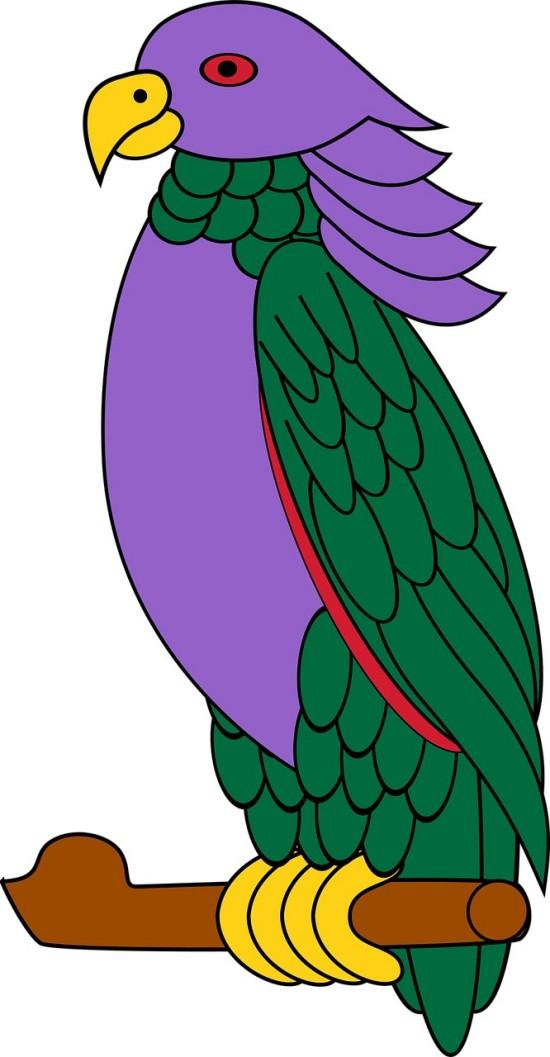
How Many Animals Native to Dominica?
What is the diversity of native animals in Dominica?
Let’s look at the total number of species of Chordata (mammals, birds, fishes, and reptiles).
Total number of animal species in Dominica: 1,934 (7,165 in total in the Caribbean Islands)
Are there snakes in Dominica?
While there are not many different species of snakes in Dominica, there are indeed some.
The most notorious of them are the boa constrictor or Dominican clouded boa, the Dominican racer, and the grove snake. Some people claim to have seen Underwood’s Mussuranas, but this species is actually extinct.
Are there crocodiles in Dominica?
Out of all reptiles found in Dominica, there are no crocodiles!
Outside of them, you can find 4 species of amphibians, several tortoises and sea turtles, geckos and lizards, whiptails, micro teiids, skinks, and worm snakes.
More About Animals in the World!
Loved these Dominica wildlife facts? Want to see what animals live in other countries?
Then check out these posts:
Or click here to see ALL the facts up on the blog! Spoiler alert: there’s A LOT of them.
Share the knowledge! Click on the buttons below to share information about these famous animals in Dominica with your friends, and help them learn more about the world 🙂
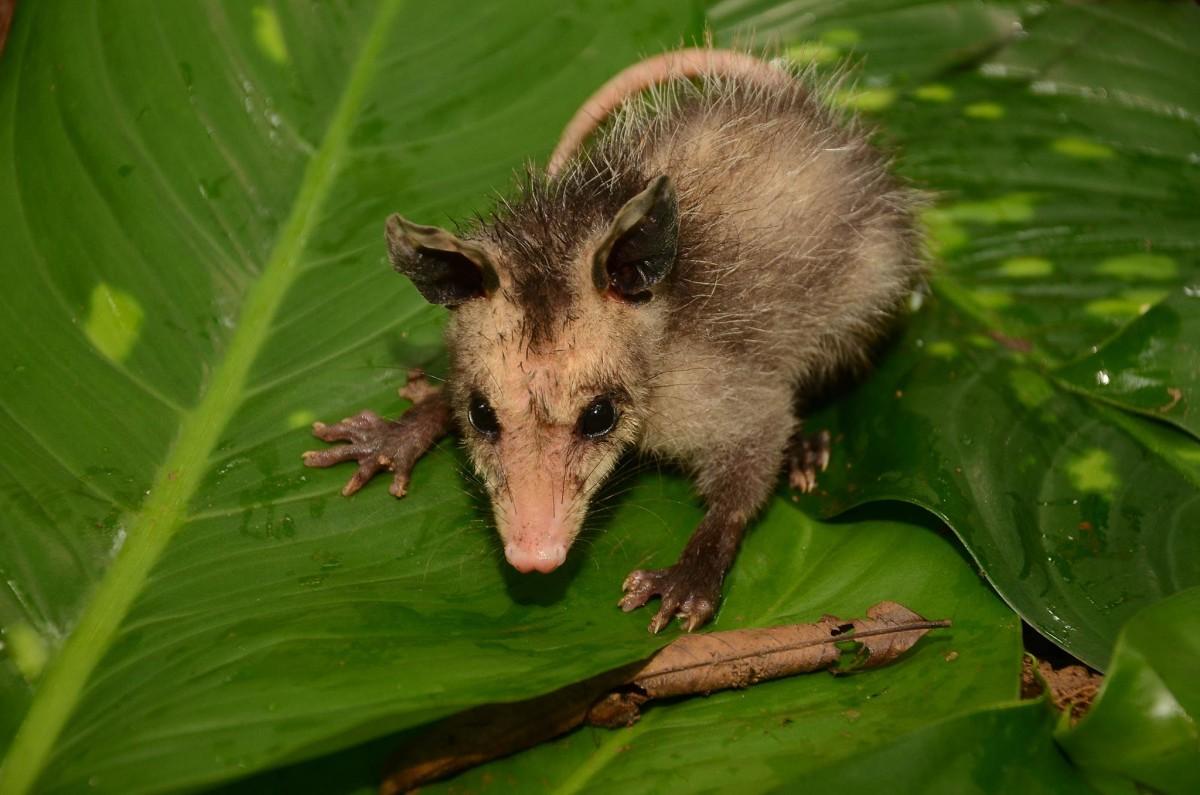
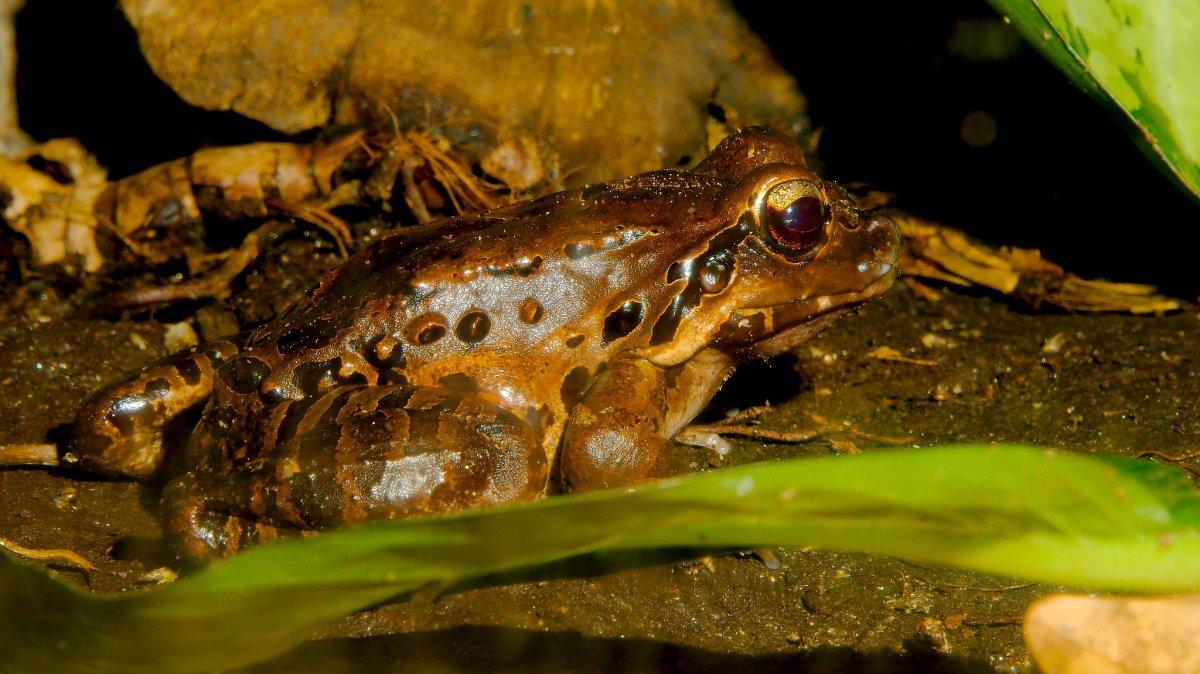

![13 Wild Animals in Illinois [Wildlife in Illinois]](https://www.kevmrc.com/wp-content/uploads/2023/07/13-wild-animals-in-illinois.jpg)
![16 Wild Animals in Haiti [Wildlife in Haiti]](https://www.kevmrc.com/wp-content/uploads/2022/08/16-wild-animals-in-haiti.jpg)
![14 Wild Animals in Cameroon [Wildlife in Cameroon]](https://www.kevmrc.com/wp-content/uploads/2022/12/14-wild-animals-in-cameroon.jpg)